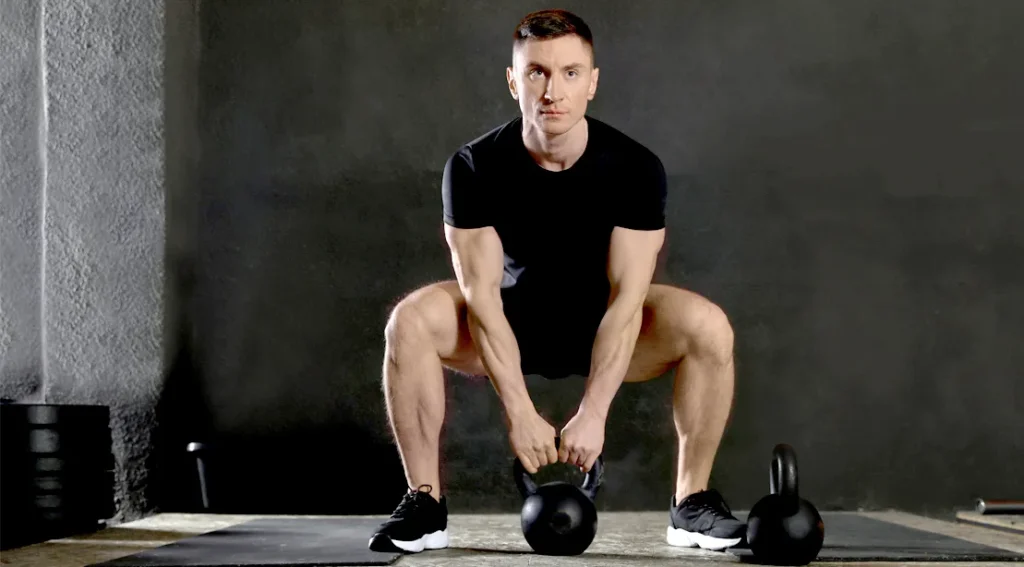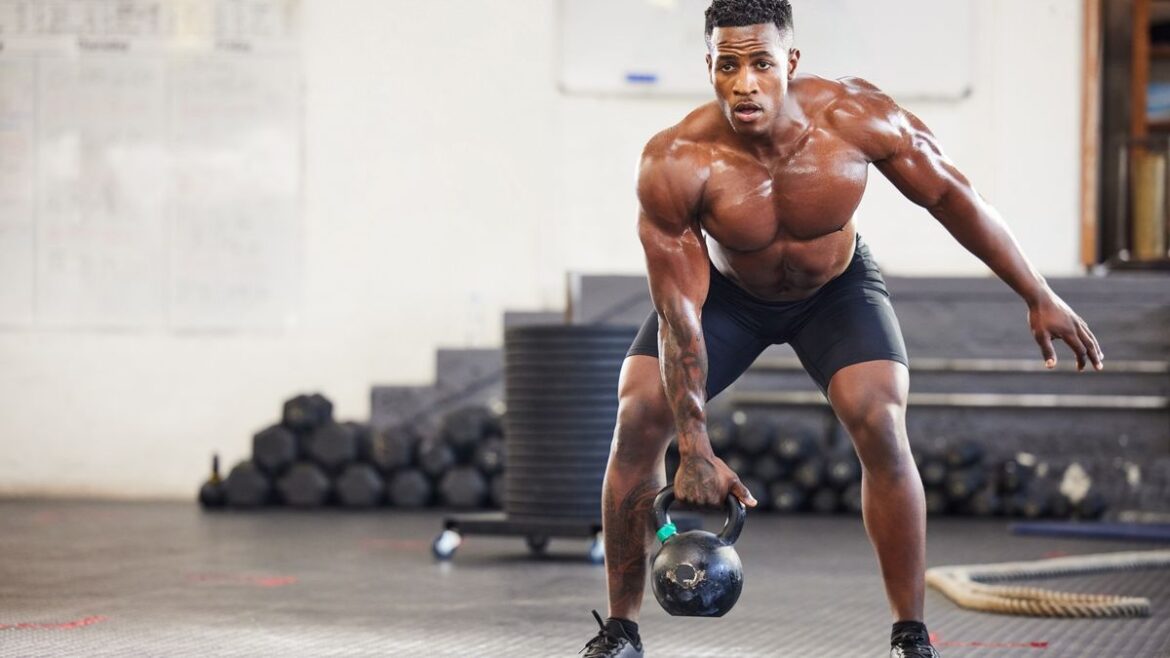Why kettlebell exercises are changing how we train
Kettlebell exercises aren’t just another fitness trend—they’re a practical, compact way to train the entire body in a short amount of time. Whether you’re aiming to build muscle, burn fat, or increase overall strength, kettlebells give you the kind of full-body engagement few tools can match. Their dynamic design allows for fluid motion and compound movement, making them ideal for those who don’t want to spend hours in a gym. You can train at home, at the park, or even during your lunch break. The best part? A single kettlebell can replace multiple machines.
How kettlebell exercises support total-body wellness
There’s a reason elite athletes and rehab specialists alike use kettlebell exercises. These movements don’t just isolate a muscle—they activate chains of muscles across your whole body. You work your core during every move, not because you’re targeting it directly, but because the design of kettlebell movement demands it. In each swing, squat, or press, your body learns to stabilize, coordinate, and generate power efficiently. That makes kettlebell training one of the few approaches that improve strength, cardio, mobility, and coordination—all at once.
Getting started the right way
Before jumping into the five routines below, it’s important to prepare properly. Start by selecting a kettlebell that feels manageable—most beginners do well with a 10–16 kg weight depending on their fitness level. Technique always comes before load. Focus on form first, especially for foundational movements like swings or squats. Always include a dynamic warm-up: arm circles, hip openers, light bodyweight squats. These activate the muscles you’re about to use and reduce injury risk. And yes, cooling down after your workout matters just as much.
Routine 1 – The Beginner Strength Circuit
This is where most people should start. It’s gentle on the joints but builds real strength. Begin with five exercises done back-to-back with short rest between each. Repeat the circuit two or three times depending on your level. Start with kettlebell deadlifts to activate your glutes and hamstrings. Move into goblet squats for lower-body control and core balance. Follow with two-arm rows to engage the upper back, and include kettlebell marches to train core stability while standing. End the round with a farmer’s carry to reinforce posture and grip strength.
Routine 2 – Full-Body Fat Burner
This routine is designed to elevate your heart rate while maintaining muscular endurance. It’s high-intensity but not chaotic. Begin with kettlebell swings—they’re explosive, fun, and burn serious calories. Push presses follow, combining leg drive and shoulder power. Then go into Russian twists for core rotation strength. Add in a clean-to-squat combo to build fluid movement. End each round with jump deadlifts for total-body power. Three rounds of this routine will leave you sweaty, challenged, and stronger.
Routine 3 – Core and Balance Builder
Many people think abs are made on the floor. In reality, the best core strength comes from standing movements and resisting unwanted motion. This routine focuses on anti-rotation, control, and balance. Start with the kettlebell windmill—a slow, precise movement that engages obliques and improves shoulder mobility. Next, try the Turkish get-up, which teaches coordination through a series of movement phases. Add in single-leg deadlifts to train posterior chain and balance simultaneously. Try plank drags using the kettlebell for lateral core tension. Finish with controlled halo circles around the head to challenge the shoulders and core stabilizers.
Routine 4 – Power and Conditioning Combo
This is where strength meets explosiveness. If you’re already familiar with kettlebell movements, this combo pushes you further. Start with snatches—one of the most complete exercises for athletic power. Transition into high pulls to build explosive hips and grip. Use clean and press as a compound lift to challenge both upper and lower body. Add in squat to overhead press for a functional movement that tests stamina and muscle. Wrap up with kettlebell burpees—challenging but worth every drop of effort. This isn’t for beginners, but it builds powerful, lean muscle across your entire frame.
Routine 5 – Quick 15-Minute EMOM
Time is no longer an excuse. With just 15 minutes, you can train your full body using the EMOM (Every Minute On the Minute) format. For the first minute, perform 20 kettlebell swings. Rest for the remainder of the minute. In minute two, switch to goblet squats. Minute three, push presses. Repeat for five rounds. You’ll cycle through each movement five times, with your heart pumping and muscles working. This quick session gives you a balanced hit of strength, endurance, and coordination.

Recover right to train better
Training hard is only half the work. Recovery helps you stay consistent. After your routine, take time to stretch key muscles—your hips, shoulders, hamstrings, and core. Use the kettlebell itself as a mobility tool. Sit into a deep squat while holding it to open the hips. Use it as a support during thoracic spine rotations. Foam roll if needed. And don’t forget hydration and good sleep—your next workout depends on it.
What to avoid with kettlebell training
Mistakes can derail progress or even cause injury. Avoid using weights that are too heavy just to look impressive. Never sacrifice form. It’s also common to overlook warm-ups and cooldowns—these small windows make a big difference. Many people also overdo push exercises like presses and forget pulls like rows, which creates muscle imbalance. Kettlebell exercises demand balance, so train accordingly. Lastly, avoid jumping between advanced exercises without mastering the basics first.
What are the best kettlebell exercises for beginners?
If you’re just starting out, keep it simple. The best beginner-friendly kettlebell exercises include:
- Kettlebell Deadlifts – perfect for learning hip hinge movement.
- Kettlebell Goblet Squats – builds leg strength and balance.
- Kettlebell Swings (2-hand) – a foundational move to build cardio and strength.
Start with light to medium weight (6–12 kg for women, 12–16 kg for men) and focus on form rather than reps.
How do I use a kettlebell at home without going to the gym?
You don’t need fancy equipment or a gym membership. Just one kettlebell, a yoga mat, and a little space is enough. Follow a 15–20 minute routine 3 times a week, focusing on full-body movements. YouTube has great follow-along sessions for all levels.
Fat Burning & Weight Loss
Can kettlebell exercises really help burn fat?
Absolutely. Kettlebell workouts combine cardio and strength, raising your heart rate and torching calories. A 20-minute kettlebell session can burn up to 400 calories, depending on intensity.
Are kettlebell workouts effective for belly fat?
There’s no such thing as “spot reduction,” but kettlebell HIIT routines can significantly reduce overall body fat—including stubborn belly fat. Combine with a clean diet, and you’ll see results faster than expected.
Building Muscle & Strength
Can kettlebell exercises build muscle?
Yes, kettlebell training builds lean muscle, especially in the legs, glutes, core, shoulders, and arms. You won’t bulk up like with heavy barbell lifting, but you’ll gain tone, definition, and functional strength.
Try exercises like:
- Kettlebell Clean & Press
- Turkish Get-Ups
- Single-Arm Rows
Do kettlebells increase strength like traditional weightlifting?
They can, especially in functional strength and grip power. While barbells allow for heavier loads, kettlebells engage more stabilizer muscles. For real-world strength (lifting, carrying, movement), they’re incredibly effective.
Creating a Routine That Works
What’s a good 20-minute kettlebell workout routine?
Here’s a simple full-body plan:
- 2-Hand Swings – 30 sec
- Goblet Squats – 30 sec
- Kettlebell Rows – 30 sec
- Kettlebell Press – 30 sec
- Rest – 60 sec
Repeat for 3–4 rounds. It’s beginner-friendly and hits all major muscle groups.
Can I follow a kettlebell-only fitness plan?
Yes! Many people follow kettlebell-only programs for months. They’re compact, portable, and hit all fitness components: cardio, strength, mobility, and endurance.
Recovery & Safety
Can kettlebell workouts cause injuries?
Only if done wrong. Poor form—especially during swings or snatches—can lead to back or shoulder strain. Start slow, watch tutorials, and don’t go too heavy too soon.
What’s the best way to recover after a kettlebell workout?
Focus on:
- Stretching your hamstrings, hips, and shoulders
- Using a foam roller
- Drinking water and having a protein-rich snack
Give yourself at least 24–48 hours between intense sessions.
Age, Health & Safety Considerations
Are kettlebell workouts safe for people over 40?
Yes—and they’re actually great for aging joints. Kettlebell exercises improve mobility, bone density, and balance. Just avoid jerky movements and work under guidance if you’re new.
What if I have back pain—can I still use kettlebells?
If you have back pain, consult a physiotherapist first. But gentle kettlebell moves like deadlifts with proper form can actually strengthen your lower back over time.
Kettlebells vs. Other Options
How do kettlebell workouts compare to dumbbells?
Kettlebells offer a different challenge. The off-center weight forces your core to engage more. They’re ideal for dynamic movements like swings, which dumbbells aren’t designed for.
Is a home kettlebell workout as good as the gym?
For many people—yes. You save time, space, and still get a full-body functional workout. The only limitation? No access to heavy progression (beyond 24 kg+), unless you invest in more equipment.
Consistency, not complexity, is the real key
You don’t need to do all five routines every week. Choose one or two based on your goals and cycle them over time. Progress comes not from doing the most intense workouts but from showing up regularly. Kettlebell exercises fit into any lifestyle—whether you’re a parent, student, or full-time professional. Keep it simple, train smart, and let the results speak for themselves. The beauty of kettlebell workouts lies in their simplicity and effectiveness—stick with them, and your body will thank you.
FAQs
How many days a week should I do kettlebell exercises?
Start with 2–3 sessions per week and build up. Recovery matters as much as training.
Can kettlebell workouts replace the gym?
Yes, for many people. With smart programming, you can build strength, burn fat, and stay functional—all from home.
What size kettlebell is best for beginners?
Women often start with 8–12 kg; men with 12–16 kg. Focus more on technique than weight.
Are kettlebell swings bad for your back?
Not if done with proper form. In fact, they can strengthen your posterior chain when executed correctly.
Do I need two kettlebells to do full workouts?
No, most routines can be done with one. However, advanced programs might use two for added challenge.
